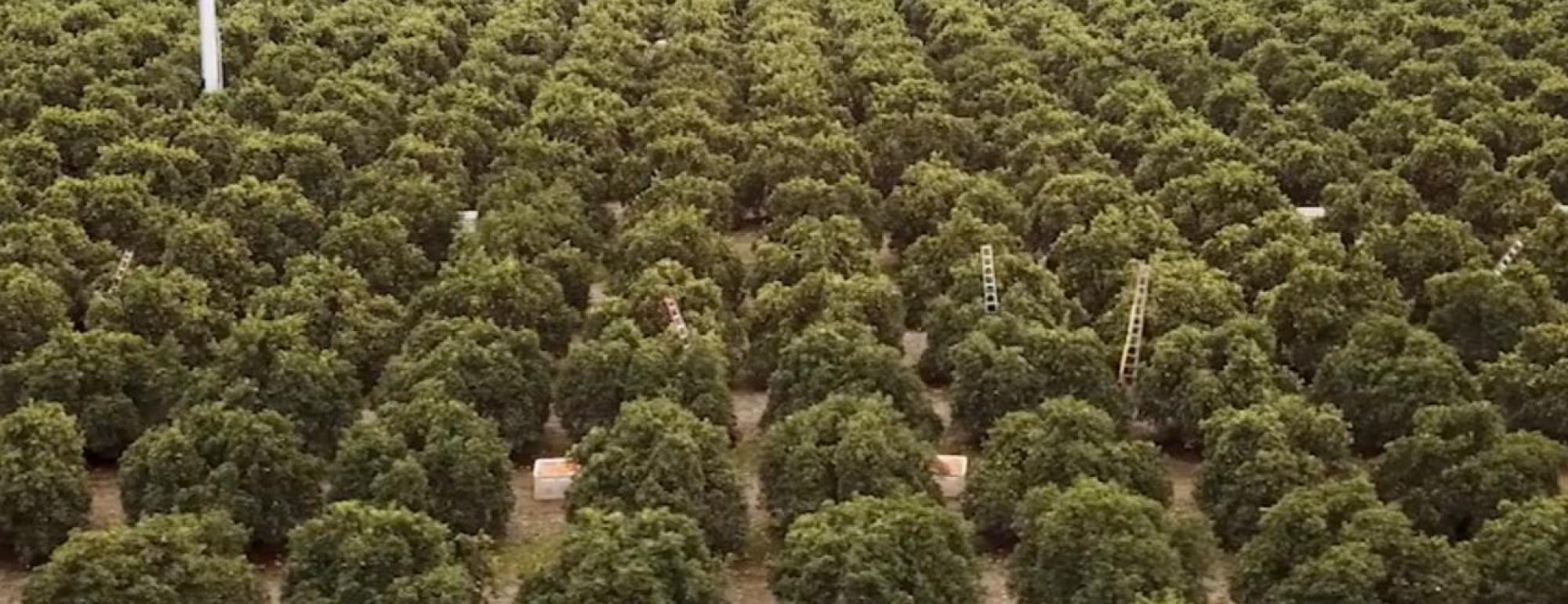In an orange grove outside Exeter, California, workers climb aluminum ladders to pick fruit with expert speed. California produces 80 percent of the nation’s fresh oranges, tangerines and lemons, most of it in small Central California communities like these.
“This may be the last place in the world where you can still grow citrus,” says farmer Richard Bennett, reaching high to pull an orange from a tree. He peels it in two long ribbons, and the scent of zest fills the air. “Citrus is so important to our health and economy, and it’s threatened by a devastating disease.”
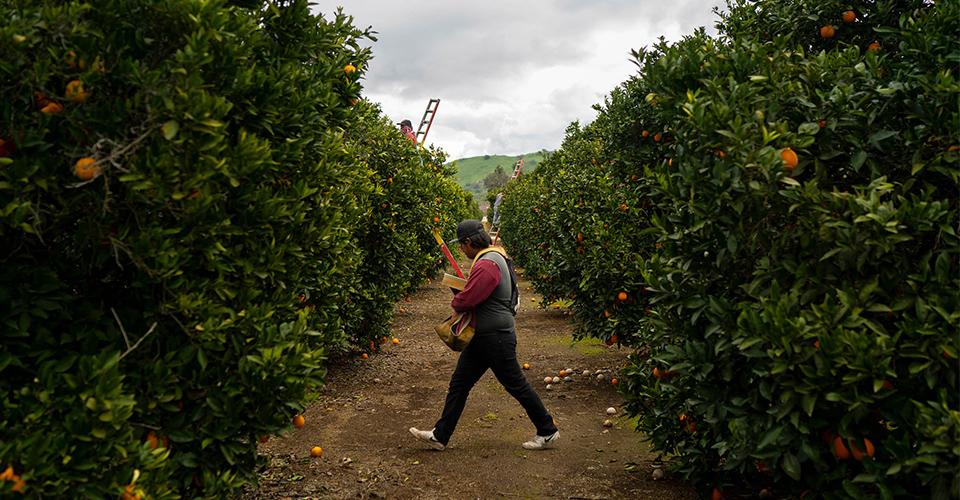
The disease is called huanglongbing or HLB — more commonly known as citrus greening. It has decimated groves in Asia, Brazil, the Dominican Republic and Florida, and is now spreading in California.
Citrus greening can move with alarming speed. In Florida, the disease was first detected in 2005. Fourteen years later, orange production has fallen by more than 75 percent, and grapefruit production is down 85 percent. Backyard citrus has virtually disappeared in some areas.
In Florida, citrus is grown mainly for processing into juice, as opposed to eating fresh off the tree, like the varieties grown in California. No citrus is immune to HLB, but the impact on varieties grown for eating is especially daunting. Juice can be blended with additives or other juices to mask the bitter taste of infected fruit. But once a piece of fresh-market citrus is infected, it’s ruined.
“If we don’t act quickly, we could lose all fresh citrus within 10 to 15 years,” says Carolyn Slupsky, professor of nutrition and food science at the University of California, Davis. “Losing citrus would be devastating to people’s health and livelihoods and even change the way we cook and eat. No lime for our guacamole, no squeeze of fresh lemon on our fish.”
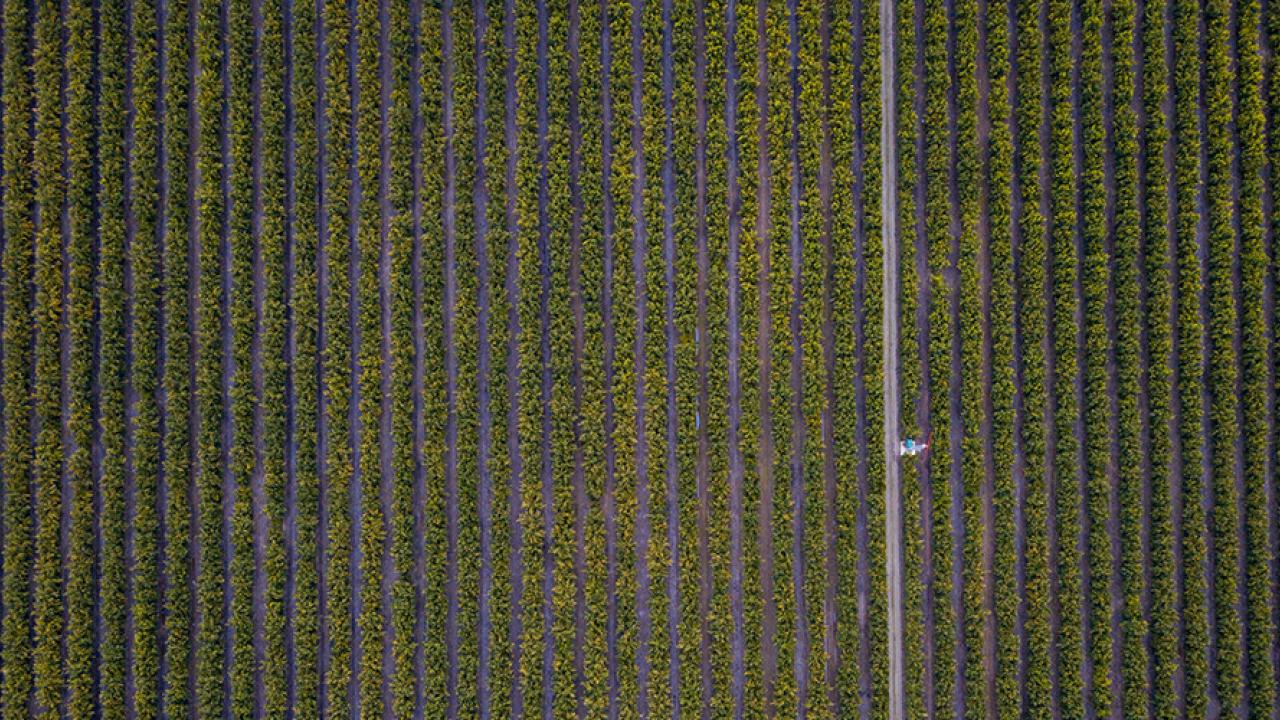
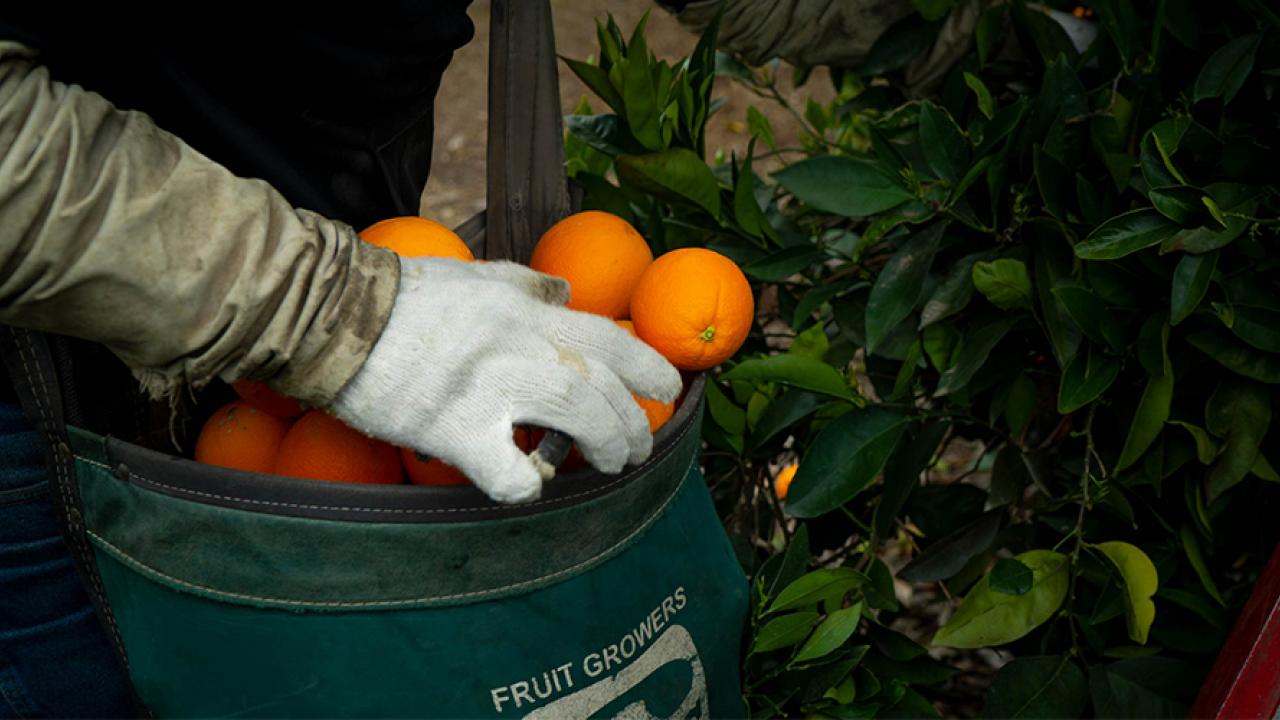
In California, state agriculture officials report they have detected HLB in more than 1,500 trees, a number that grows by about 60 each week as officials inspect and remove suspect trees. An infected tree can live for years without symptoms, allowing the pathogen to spread unnoticed to other trees, so the number of dying citrus trees in California may be much higher.
So far, infected trees have been found mainly in backyards in Los Angeles and Orange counties. Officials say there is no guarantee the pathogen hasn’t already infected trees in commercial groves or spread to Central and Northern California, but they hold out hope.
“Some people believe that citrus in the Central Valley might be spared because of the climate — that the winters are too cold and summers too hot for the insects that transmit the disease,” says UC Davis Professor Neil McRoberts, a plant disease epidemiologist and scientific advisor to the Citrus Research Board of California. “But it looks like the Central Valley temperatures are right at the threshold, so a few degrees warmer in the winter and cooler in the summer could change that. I think we’re at the tipping point. If people work together and nature helps us out, fresh citrus might be able to hold on.”
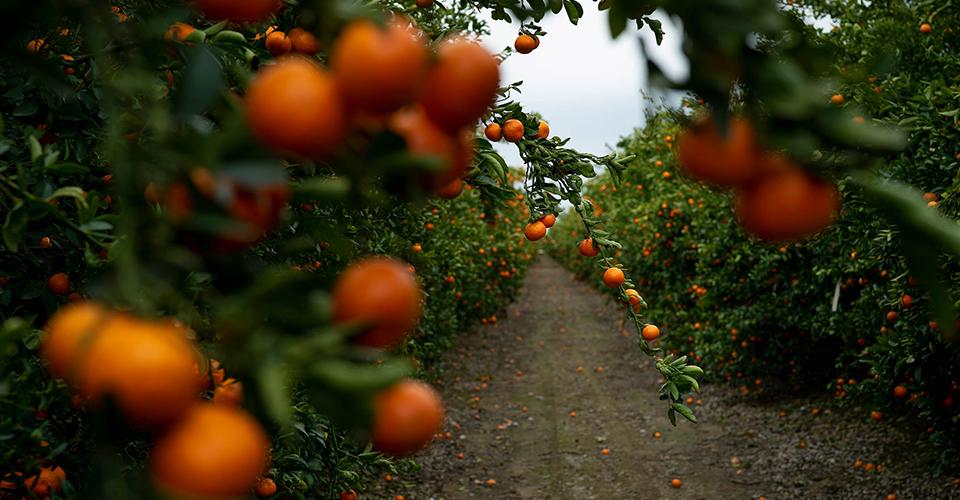
Fighting what can’t be seen
HLB is caused by a bacterium that spreads tree-to-tree by the Asian citrus psyllid, a tiny insect that feeds on citrus leaves and stems. Infected trees can look healthy for years, all the while serving as reservoirs of disease. Symptoms emerge over time as a dying tree’s fruit turns misshapen, bitter-tasting and green — which is how it got the name “citrus greening.”
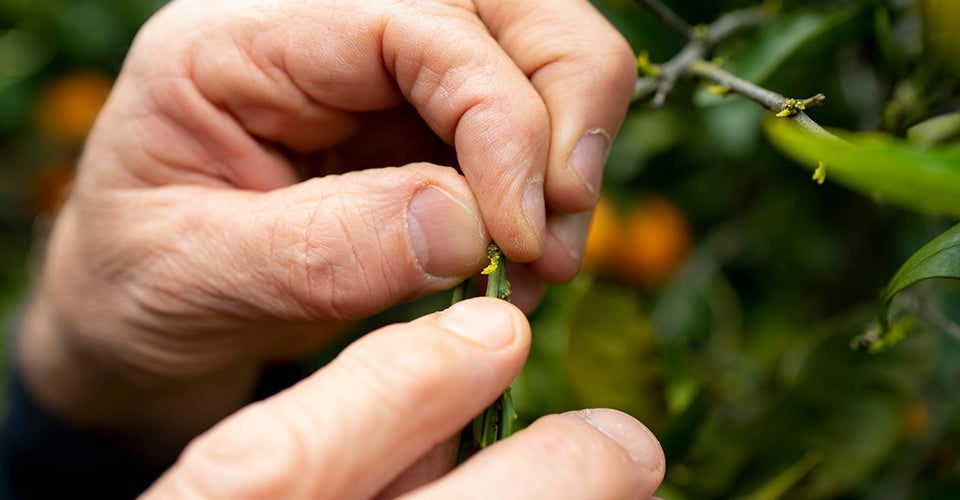
There isn’t a cure yet, so researchers are seeking ways to spot it early in order to slow the spread while they explore long-term solutions like disease-resistant varieties.
How can you detect HLB before visual symptoms appear? The microbe that causes the disease can sometimes be found in a leaf, but results can be misleading because the pathogen isn’t evenly distributed throughout the tree.
“Just because the microbe doesn’t show up in one leaf doesn’t guarantee that tree is not infected,” Slupsky explains. “There’s a lot of room for sampling error.”
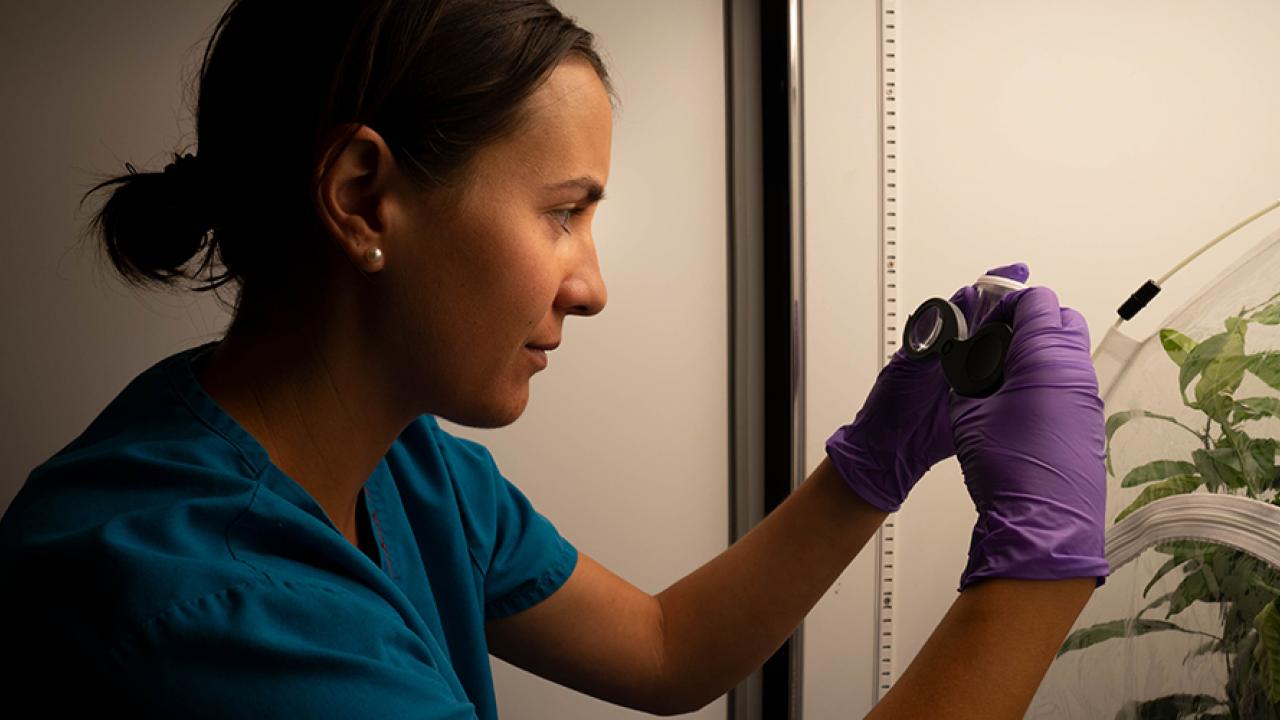
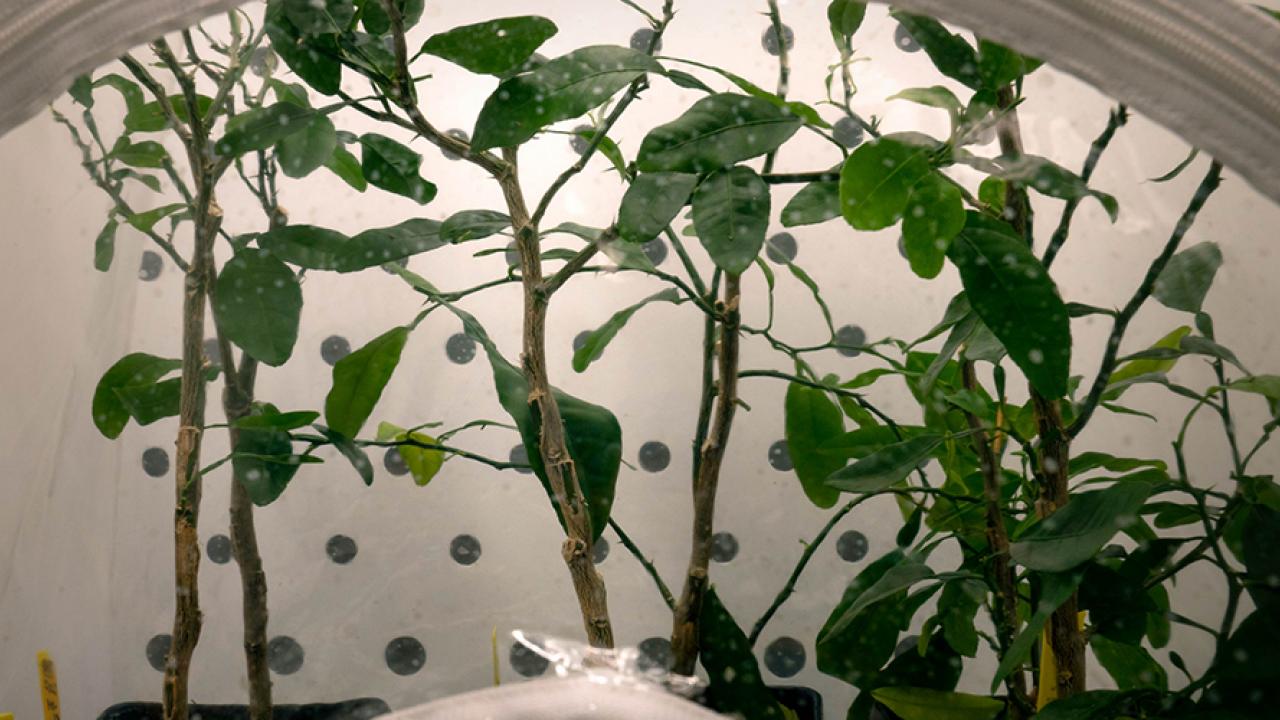
Working with Kris Godfrey, an associate project scientist at the UC Davis Contained Research Facility, Slupsky has discovered differences in the chemical fingerprint of leaves very early in the infection, which could improve early detection.
Maybe the scent of sickness can help researchers identify infected trees. Trained dogs are showing promise at smelling the disease within a few weeks of infection, much sooner than when a typical molecule test can confirm HLB. In recent tests in Florida and Southern California, dogs have been accurate more than 92 percent of the time.
Cristina Davis, a UC Davis professor in mechanical and aerospace engineering, has developed and commercialized technology that’s similar to the power of a canine nose. Her team’s device collects odors from the air around citrus trees, which can then be analyzed in a lab for specific biomarkers associated with citrus greening.
“After many field trials, we have proved we can identify HLB 90 percent of the time,” Davis said.
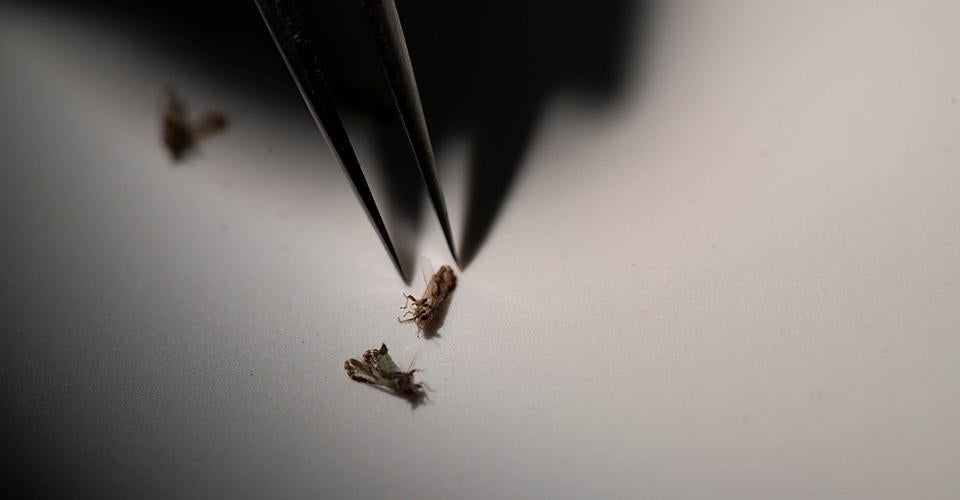
Science breeds hope
Finding a cure is complicated by the fact that the bacterium that causes HLB, like some other microbes, is “unculturable,” which means it can’t be grown outside the host and studied in a petri dish.
“To understand how the infection works and find ways to fight it, we have to perform experiments within infected plants,” said Gitta Coaker, a UC Davis professor in plant pathology. “That’s harder and more time consuming because we have fewer tools available to test possible antimicrobials, and it is laborious to identify genes that influence disease resistance. And, trees take a long time to grow.”
Coaker and her team are developing ways to test citrus plants for resistance at a very early stage, which could speed up the breeding process by identifying genes that influence important traits.
UC economists say citrus production provides $7 billion to California’s economy, including $500 million in wages. The state citrus industry is investing more than $40 million annually to improve methods to detect HLB-infected trees and develop a cure.
Citrus grower Bennett finds hope in the science and collaboration.
“I worry that we may already be too late, but I do find optimism in the research,” Bennet says. “Science is our last hope.”
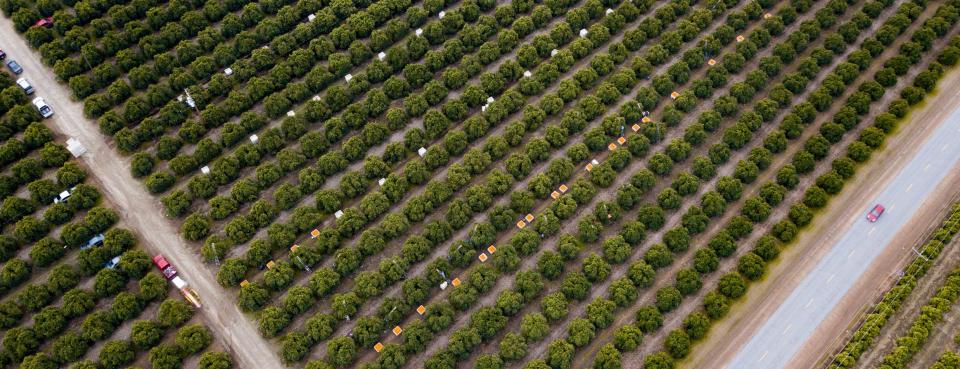
Media Contact: Diane Nelson, senior writer in the College of Agricultural and Environmental Sciences, denelson@ucdavis.edu, (530) 752-4798
Related Stories
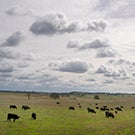
Cows and Climate Change
Inside the University of California, Davis, dairy barn, a Holstein cow has its head and neck sealed airtight inside a large, clear-plastic chamber that resembles an incubator for newborns.

The Okaranchi Story—An Ingenious Tale of “Recycled” Food
A team of international food science students is revolutionizing how soy is sustainably consumed around the world.
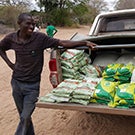
Protecting Small Farms in Mozambique From Drought
A team of agricultural scientists is testing whether insured seeds can improve food security for farmers who risk losing crops to extreme weather.
